
Education
Chemung Valley Audubon Society is committed to increasing diversity, equity, and inclusion in our conservation and education programs and to welcoming all who wish to work and learn with us. We want all of our members, their friends, their family members, and every one we meet to be active participants in promoting our mission and protecting our birds. One way we ensure our success is through FREE, fun, family-friendly programming.
Nature Strollers
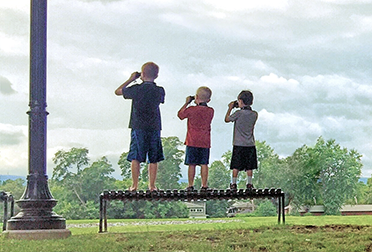 |
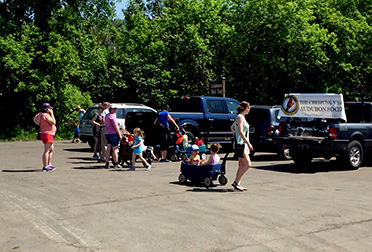 |
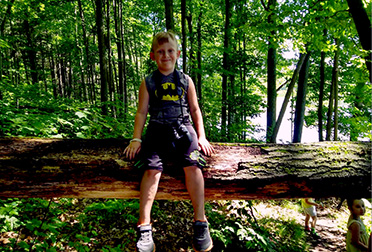 |
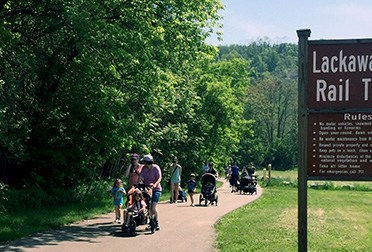 |
This nine-month program, late March through the middle of December, is led by a Chemung Valley Audubon Society (CVAS) member and early childhood educator. Children and their parents enjoy leisurely walks that take place at different trails, parks, and natural areas in and around Chemung County. CVAS provides binoculars for parents and children to use during the walks.
Children and parents interact with each other and enjoy exploring our natural world. Chemung Valley Audubon provides individual packs of assorted snacks and cups of water during a break in the walk. The children enjoy the snacks while listening to a nature themed book during the break. The children enjoy hearing a nature themed story during the break. Each child gets to choose a nature themed book to take home.
This outdoor experience helps to build on the sense of wonder and awe children naturally have with the outdoor world. It nurtures their awareness and use of their senses to explore the natural environment and habitats. Parents and children are introduced to the names of birds, plants, and other animals found at the various trails. This program introduces families to places in our area to go walking and exploring on their own. Being outdoors in nature supports the well-being of both children and parents.
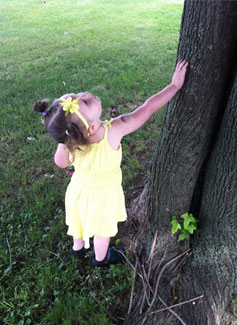
This program cancels for thunder and lightning, but we love to walk any other time, including in the rain! We've received so many positive reviews from parents, and many report that our program has inspired their children to learn more about wildlife and spend more time outside. It's a great way for you and your children to experience new places and get new experiences in familiar places in our area!
Book Club
The CVAS book club meets on the second Thursday each month at 7:00 PM at Appleridge to discuss books focusing on birds, bird habitats, and environmental issues. All are welcome to participate. For meeting information and a list of the books we'll be reading, please view the calendar and the book list.
Public Outreach & Community Partnerships
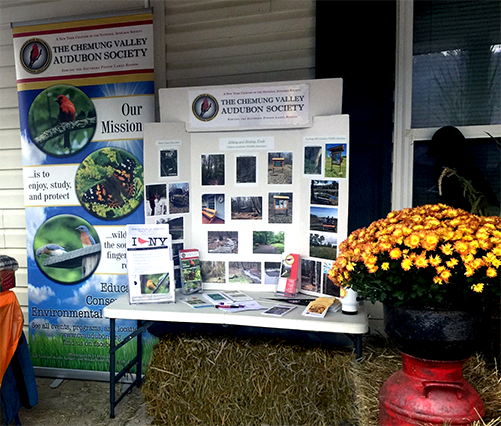
Interested in learning more about Chemung Valley Audubon activities? Stop by our information table at any one of a dozen public events we'll be attending in the months ahead.
In May 2018, CVAS member and current President Gail Norwood was approached by a friend that suggested it would be nice if an Osprey nesting platform could be installed at Chemung County’s Park Station. Gail’s inquiries led her to Boy Scout Troop 87 in Big Flats that meets at the Big Flats Presbyterian Church. It turned out that a scout in the organization, Noah M., was looking for an Eagle Scout project.
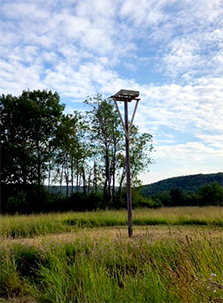
Noah, CVAS members, and the manager at Park Station met in the Fall to outline the proposed project. Noah worked on constructing the platform through the winter months. On June 6, 2019, Noah, leaders and scouts of Troop 87, park staff, and CVAS members met and installed the platform. No equipment was used to install the pole. The platform was installed by the volunteer group using only ropes.
Congratulations, Noah! Check out the Osprey LiveCam.
BirdSleuth
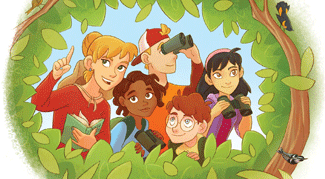
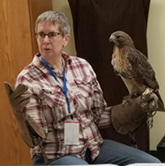 BirdSleuth is a lively program for school-aged children that is taught by CVAS volunteers. BirdSleuth teaches key concepts, including diversity, adaptations, food webs, and more, through hands-on learning. Visit the BirdSleuth website to view resources like webinars, a guidebook, a curriculum, and more. Developed by Cornell Lab of Ornithology, BirdSleuth encourages kids to spend time in the outdoors, focusing on the sights, sounds, and behaviors of birds; to answer their own questions about nature by using the scientific process; and to engage in data collection through citizen science. We encourage you to make a donation to Chemung Valley Audubon Society to support this and other educational programs that CVAS offers in the Southern Finger Lakes region.
BirdSleuth is a lively program for school-aged children that is taught by CVAS volunteers. BirdSleuth teaches key concepts, including diversity, adaptations, food webs, and more, through hands-on learning. Visit the BirdSleuth website to view resources like webinars, a guidebook, a curriculum, and more. Developed by Cornell Lab of Ornithology, BirdSleuth encourages kids to spend time in the outdoors, focusing on the sights, sounds, and behaviors of birds; to answer their own questions about nature by using the scientific process; and to engage in data collection through citizen science. We encourage you to make a donation to Chemung Valley Audubon Society to support this and other educational programs that CVAS offers in the Southern Finger Lakes region.
We encourage you to make a donation to Chemung Valley Audubon Society to support this and other educational programs that we offer in the Southern Finger Lakes region.
CVAS Monthly Meeting
CVAS members and guests meet at Appleridge (Map) on the third Thursday of the month, February through May and September through December. Each meeting features an expert and engaging speaker discussing a topic relevant to our mission, including conservation efforts, bird, and wildlife identification, and more.
A bird identification workshop begins at 7:00 PM, and the program begins at 7:30 PM. All are welcome to these free events.
Visit our calendar for details about our next meeting.
Preventing Bird Loss
As a member of the Audubon Society and a viewer of this web site, you are probably interested in not just birds, but in all wildlife and their habitats. Birds are good indicators of changes in their environment—the “canary in the coal mine.”
Recent reports describe the serious problem of bird loss. In a study issued on September 19, 2019, in the journal Science, Kenneth Rosenberg et al. report that there are nearly 3 billion fewer birds across North America today than there were in 1970, a loss of approximately 30%. Experts at the Cornell Lab of Ornithology were astonished by the numbers. Habitat loss seems to be a driving force, along with climate change.
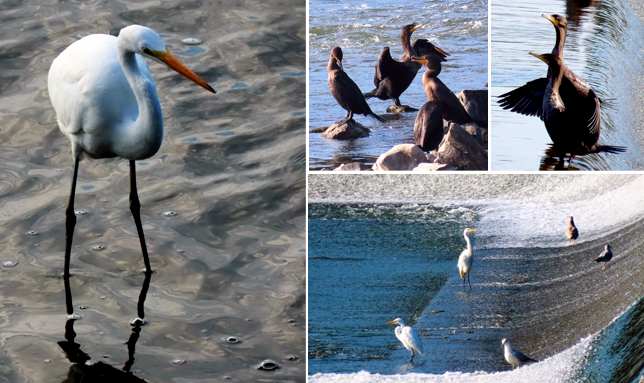 © Michele Rosenbaum
© Michele Rosenbaum
Two more recent articles have come out. “Survival by Degrees,” an article published October 10, 2019, by Kenn Kaufman, a field editor for Audubon magazine, states that Audubon scientists have analyzed the current geographical range of 604 North American bird species and modeled how those ranges would change with different levels of warming. The second article is in the autumn issue of Living Bird, Cornell Lab of Ornithology’s quarterly magazine. It’s titled “Vanishing: More Than 1 in 4 Birds Has Disappeared in the Last 50 Years.”
Here are actions we can all take now to help birds:
- Make windows safe from bird strikes. Install screens or specialized curtains, or attach stickers to break up the reflections.
- Keep cats indoors. Speak out about the impacts of feral cat colonies. Cats are a top source of bird loss.
- Plant native plants as sources of nectar, seeds, berries, and insects for the birds.
- Avoid pesticide use around your home, and buy organic food.
- Drink shade-grown coffee with the Rainforest Alliance or Bird Friendly Smithsonian certification. The coffee is grown beneath trees that help migratory birds survive the winter.
- Avoid single-use plastics. Recycle to keep plastics out of landfills and the ocean.
- Watch birds and report what you see to eBird, Project Feeder Watch, or the Christmas Bird Count. Become that citizen scientist.
Visit the Cornell Lab of Ornithology for more information on everyday steps to help the birds. Other helpful sources are Wild Birds Unlimited, Bird Watcher’s Digest, and Birds & Blooms.
In closing, get out there and enjoy the birds and the wildlife around them. Chemung Valley Audubon has programs and bird walks that are free and open to all.
Gail Norwood, Former President, Chemung Valley Audubon Society
New York State Ornithological Association, Inc. (NYSOA)
As stated on the NYSOA website, NYBirds.org: "The objectives of the New York State Ornithological Association are to document the ornithology of New York State; to foster interest in and appreciation of birds; and to protect birds and their habitats."
Audubon Council of New York State
Led by the Audubon Council, New York's 27 chapters are part of a national network that is nearly 450 chapters strong. With two annual council meetings a year and Audubon New York staff working with chapter leaders to connect their chapters and members to our work, the Council is committed to preserving wildlife and habitat and nurturing the spirit of conservation through diverse statewide programming.
Each year, Audubon New York and the Audubon Council of New York State develop a common set of legislative and administrative actions for the Governor, Legislature and Congress to advance protection of birds, other wildlife and their habitats in New York. These resolutions provide the basis of Audubon’s collective advocacy efforts and guide the development of Audubon New York’s annual legislative priorities.
NestWatch
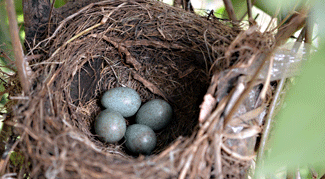
NestWatch is a nationwide monitoring program of the Cornell Lab of Ornithology in which volunteers find and monitor bird nests. The data we submit allows for more accurate reporting of the status of breeding birds. To learn more about NestWatch, click here.